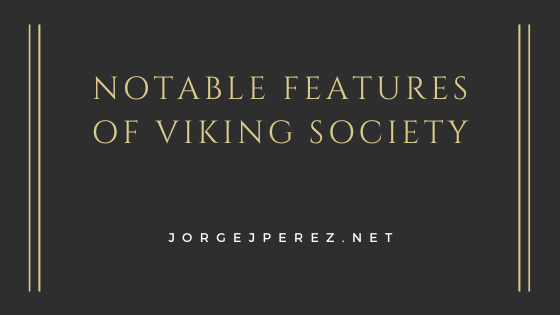Vikings are often remembered for their ways of battle and exploration. As seafaring Scandanavians, these associations are founded. However, there was much more to Viking society that contributed to their lasting impact on history. From the dynamics of their civilization, their culture, and, of course, their warrior nature, Vikings comprised a dynamic society that bred strong, noble individuals who made their home in the north.
Originating in the modern-day regions of Denmark, Norway, and Sweden, Vikings quickly became known for their violent raids. What led to their propensity for invasion is unclear; some potential influences could have been overpopulation, chieftain conflicts, and rumors of riches in other regions. Whatever the reason, Vikings expanded their regional influence by conducting raids on Northumbria, Scotland, Ireland, France, and more over the course of their powerful existence.
It is important to note the distinction between Vikings and other Scandinavians; while all Vikings were Scandinavian, most Scandinavians were not Vikings, and those outside of Viking society were called Norsemen or Northman and did not share the same values or practices.
Social Classes
In the Age of the Vikings, there were three broad social classes comprised of the following: jarls, karls, and thralls. In early Viking society, there were no kings, but the classes still dictated status, wealth, and privilege. The jarls were the noble class. They were characterized by their wealth, measured in things like estates and treasure, as well as power. While the jarls likely experienced some luxuries that those of the other classes did not get to have, there was enough social mobility to allow a karl to become a jarl given the right circumstances.
Most members of Viking society were karls, which can be equated to a sort of middle class. Karls occupied a large variety of roles including farmers, blacksmiths, and other practitioners of common trades.
Thralls were the lowest class in Viking society, and this class consisted of slaves and bondsmen. Many slaves were captured during raids, and their lives were undoubtedly harsh. If a member of Viking society became unable to pay off existing debt, he was expected to become a bondsman and work without pay until the debt was forgiven.
The actual structure of Viking social classes tended to vary based on the region. In Iceland, for instance, the jarls were obsolete. While these three classes can broadly apply to Viking society, it is important to remember that social mobility and flexible class structure contributed to a much more dynamic society than these three basic classes may suggest.
Women in Viking society were often considered to be a part of the same class as their fathers, brothers, or husbands. In this society, women were actually granted considerable freedoms compared to other cultures at the time; while they could not choose their marital partner, men were not allowed to do so either, as marriages were arranged by other men of the tribe. Women were also allowed to own land through their inheritance and own their own businesses. Because there were no male religious leaders, women served as prophetesses for both of the primary gods: Freyja and Odin.
Viking Raids
Naturally, because of the devastating impact on other societies, the raids conducted by Vikings are among what their society is best known for. The early raids were relatively small, and the Vikings returned home with their bounty (typically treasure, supplies, and slaves) once they finished plundering their target. However, the raids gradually became more intense and longer in duration. Later in the ninth century, they began to construct bases from which they would operate. These bases allowed the Vikings to target more regions without having to return to their homeland between raids. During this period, the Vikings laid siege to a number of Anglo-Saxon kingdoms, capturing regions such as Northumbria and Mercia. At one point, the Vikings nearly captured Paris, as well. Between the ninth and tenth centuries, the modern-day region of England was divided between the Anglo-Saxon south and the Viking north. Ultimately, the Vikings were killed or expelled, but the influences of Viking culture persist to this day.
Exploration
In addition to their notable raids on other regions, Vikings are also commonly associated with their exploratory natures. As mentioned earlier, one of the reasons Vikings conducted their raids could have been an issue of overpopulation; in other words, the raids could have been used to scout out available land. In the same fashion, Vikings embarked on more exploratory expeditions to seek out unsettled land, as well. Due to this goal, Vikings ultimately sailed farther west than other societies at the time, settling parts of Iceland before venturing even farther across the Atlantic.
Viking society was complex and multi-faceted. From its social classes and religious beliefs to its exploratory and combative tendencies, Viking culture remains one of the most influential in history. Because of the Vikings’ frequent involvement with other civilizations as well as their discovery of new lands, the Vikings have left a lasting impact on the world.

